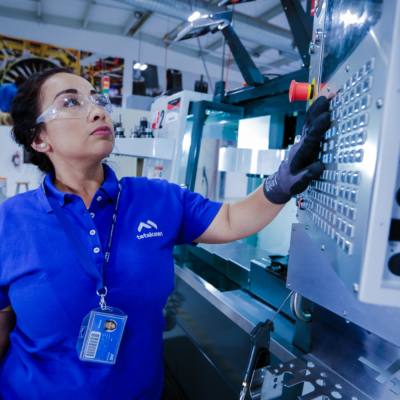Artificial intelligence (AI) is no longer a futuristic concept—it’s already influencing how local governments operate AI Governance . From smart traffic systems to predictive policing tools, AI Governance is making its way into public service at the local level. But as the technology grows more powerful, so do the concerns around its use.
Local government officials are beginning to express serious concerns about how to manage the risks, ethics, and regulation of AI in their communities. While AI promises efficiency and innovation, it also presents new challenges, including data privacy, algorithmic bias, and lack of oversight.
This article explores how local leaders perceive AI governance and regulation, what risks worry them most, and what they believe is needed to create responsible AI policies.
Understanding the Local Role in AI Governance and Regulation
Unlike national governments that focus on broader policies, local governments face real-world applications of AI daily. Whether it’s a school district using AI to track attendance or a city deploying facial recognition technology, the decisions made locally impact citizens directly.
Despite this, many local governments are entering the AI space with limited guidelines or regulatory support. Officials are expected to implement cutting-edge tools, often sold by private vendors, without clear legal frameworks or technical expertise.
The challenge is not just adopting AI but doing so in a way that is fair, transparent, and accountable.

Perceptions of AI: Balancing Hope and Caution
Local officials generally view AI as a tool that could improve government efficiency and public service delivery. But their optimism is tempered by serious concerns.
Opportunities Seen by Local Officials
- AI can automate routine tasks, saving time and resources
- Public safety applications such as predictive policing and gunshot detection offer faster response times
- Chatbots and virtual assistants help residents access services more efficiently
Key Concerns
- Surveillance technologies risk invading citizen privacy
- Algorithms may reflect or amplify existing societal biases
- There is a general lack of understanding among officials about how AI systems work
One city administrator commented that while vendors are offering AI-based solutions, most local leaders lack the training to evaluate whether these systems are ethical or even effective.
Risks Identified by Local Government Leaders
Several consistent risks have emerged from interviews and local government reports. These include:
1. Privacy Violations
Facial recognition tools and data-tracking systems raise concerns about how much personal data is collected and how it’s used. In many cases, there are no clear rules for consent or data storage.
2. Algorithmic Bias
Some AI systems used in hiring, policing, or resource allocation have been shown to disproportionately affect minority and low-income communities. Without proper oversight, these tools can worsen inequality.
3. Cybersecurity Weaknesses
AI tools, especially those connected to infrastructure or sensitive data, present new vulnerabilities. A single breach could disrupt services or expose personal data.
4. Lack of Transparency
Vendors often treat their algorithms as proprietary, meaning local governments and the public are unable to see how decisions are made. This creates accountability problems.
5. Decline in Public Trust
When AI tools make decisions that affect people’s lives—such as denying a permit or influencing policing—without clear explanations, it can lead to distrust in government.
The Struggle to Regulate at the Local Level
Most local governments have very limited tools for regulating AI use. Often, cities and counties adopt technologies first and think about governance later. This puts officials in a reactive position.
Several challenges make regulation difficult:
- Few legal frameworks exist at the municipal level for AI oversight
- Small and mid-sized cities often lack dedicated tech or legal teams
- Vendors are frequently ahead of policymakers in deploying new tools
Without coordinated support or standardized guidelines, local leaders are often left navigating AI risks on their own.
What Local Leaders Are Calling For
Despite the challenges, many local officials are eager to shape AI governance in a way that benefits their communities while minimizing harm. Through public hearings, surveys, and pilot programs, they are beginning to outline what responsible AI regulation should look like.
Clear Federal and State Guidelines
Local leaders want higher-level governments to create baseline policies that they can adapt locally. They believe consistent rules across cities and states will prevent confusion and limit harm.
Local Oversight and Ethics Boards
Some cities have created independent boards to review and approve AI systems before they’re used in public programs. These boards often include ethicists, legal experts, and community representatives.
Transparency and Vendor Accountability
Officials want vendors to be legally required to disclose how their AI tools function, particularly when they are used in sensitive areas like law enforcement, hiring, or public health.
Mandatory Impact Assessments
Before rolling out new AI systems, local governments are beginning to call for impact assessments that examine risks related to bias, privacy, and unintended consequences.
Training and Capacity Building
There is strong support for more education and training at the local level. Officials want to understand the systems they are buying and be able to make informed decisions about their use.
Examples of Local AI Regulation Efforts
Some local governments have already taken bold steps to manage AI technologies.
San Francisco, California
San Francisco banned the use of facial recognition by public agencies. This was one of the first and most high-profile examples of a city taking action to protect privacy over technology expansion.
New York City, New York
The city formed a task force to study automated decision systems in government. While the group faced challenges in accessing vendor data, the effort sparked wider debate on transparency and fairness.
Seattle, Washington
Seattle launched an online registry listing all AI tools currently in use by the city. This effort is designed to promote transparency and allow residents to see how their data is being used.

Looking Ahead: A Responsible Future for AI in Local Government
As artificial intelligence becomes more integrated into public services, the role of local governments will continue to grow. Cities and counties will need to find ways to balance the potential benefits of AI with the obligation to protect civil rights and public trust.
To do this, local leaders are calling for more than just technology—they’re asking for frameworks, education, funding, and ethical guidance. They want AI that serves people, not systems that control them.
While federal and state governments play an essential role, the leadership shown by local officials will be critical in shaping how AI is used in everyday life.
Conclusion
AI governance and regulation is no longer an abstract issue—it’s a daily concern for local leaders tasked with keeping communities safe, fair, and functional. As new technologies continue to emerge, local governments must navigate complex risks without sacrificing the values that define public service.
The time for action is now. With the right policies, training, and oversight, local governments can use AI in ways that truly benefit their communities—while avoiding the many pitfalls that unregulated technology brings.
Do Follow USA Glory On Instagram
Read Next – Golden Dome Missile Defense Policy Shifts U.S. Space Strategy






